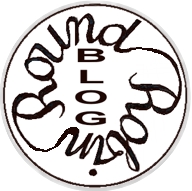This month’s Round Robin question is about Viewpoint. How do we as writers tell the story, show the characters’ emotions and switch between them?

My normal mode is 3rd person character. That means, I am in one head at a time, but as the author. I don’t find 1st person easy to write. I enjoy reading author omniscient, but haven’t found it attractive enough to tempt me. I’ve never written anything in 2nd person where you might have used 1st, but are allowing a bit of outside observation and comment.
Generally, my novels will employ two central viewpoints. They will normally be the hero and the heroine. I enjoy pitting an attractive couple against one another and I like to see the same problem from two perspectives.
So, in Mariah’s Marriage, Mariah is determined to save Arabella from her brother’s violence, but Tobias is equally determined that doing so would put Mariah herself in danger.

London Girl
It’s a conflict of opinion. We, the reader, see Mariah enlist the help of her maid to outwit the considerable obstacles Tobias has placed in the way of her leaving the house. Eventually, we understand why Tobias has acted the way he has and, tension mounting, we’re in his head as the drama unfolds.
I think that’s why I find 1st person difficult. There just seems to be so much more needed by way of comment when that single voice has to keep filling us in. Things like ‘Of course, I didn’t know at the time, but Tobias thought I was dead.’ – are well enough, and often skilfully handled, but I prefer to be in Tobias’s head while he’s doing that thinking; while he’s doing that sufferring.
Maybe it’s because I used to write plays…
The serial I wrote for People’s Friend in 2016, A Traveller’s Life, had several voices. I enjoyed that a lot. It was liberating to leave the (self-) imposed discipline of two voices and allow one or two more to take centre stage. Again, the dramatist in me loved hearing what all these people thought. However, it’s not unbridled by any means. People’s Friend like their serials presented in ‘chapters’ so each one had a central Viewpoint. I was not head-hopping.
So, here’s the divide – what is head-hopping and why do some editors permit it?
Head-hopping is where the author allows everybody and his auntie to have their say – in one chapter, sometimes – I’ve seen it done – even in the same paragraph.
Personally, I find that way of writing too confusing for words. I want to know who I’m rooting for and whose story is the one being told. The Raj Quartet by Paul Scott is a modern tour de force and some of it tells the same story over. However, Scott uses different books to do this and that’s not a luxury offered to all.
I have a short historical story in a new anthology by Capital Writers, Capital Stories. It’s available for your kindle and a wee snip at 99p/$1.37. 
There are other opinions on this fundamental writing skill and you’ll find some of them here:
Dr. Bob Rich https://wp.me/p3Xihq-1ag
Connie Vines http://mizging.blogspot.com/
Helena Fairfax http://www.helenafairfax.com/blog
Fiona McGier http://www.fionamcgier.com/
Judith Copek http://lynx-sis.blogspot.com/
Marci Baun http://www.marcibaun.com/blog/
Anne de Gruchy https://annedegruchy.co.uk/category/blog/
A.J. Maguire http://ajmaguire.wordpress.com/
Skye Taylor http://www.skye-writer.com/blogging_by_the_sea
Anne Stenhouse https://annestenhousenovelist.wordpress.com/
Beverley Bateman http://beverleybateman.blogspot.ca/
Rhobin L Courtright http://www.rhobinleecourtright.com
Diane Bator http://dbator.blogspot.co.uk/





